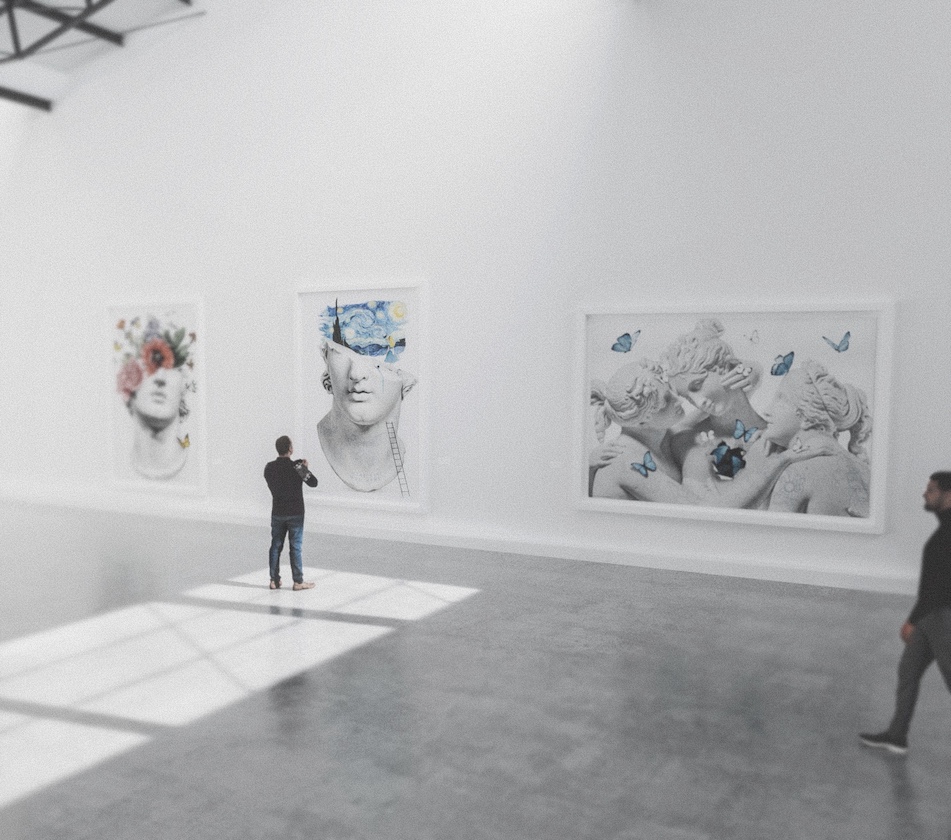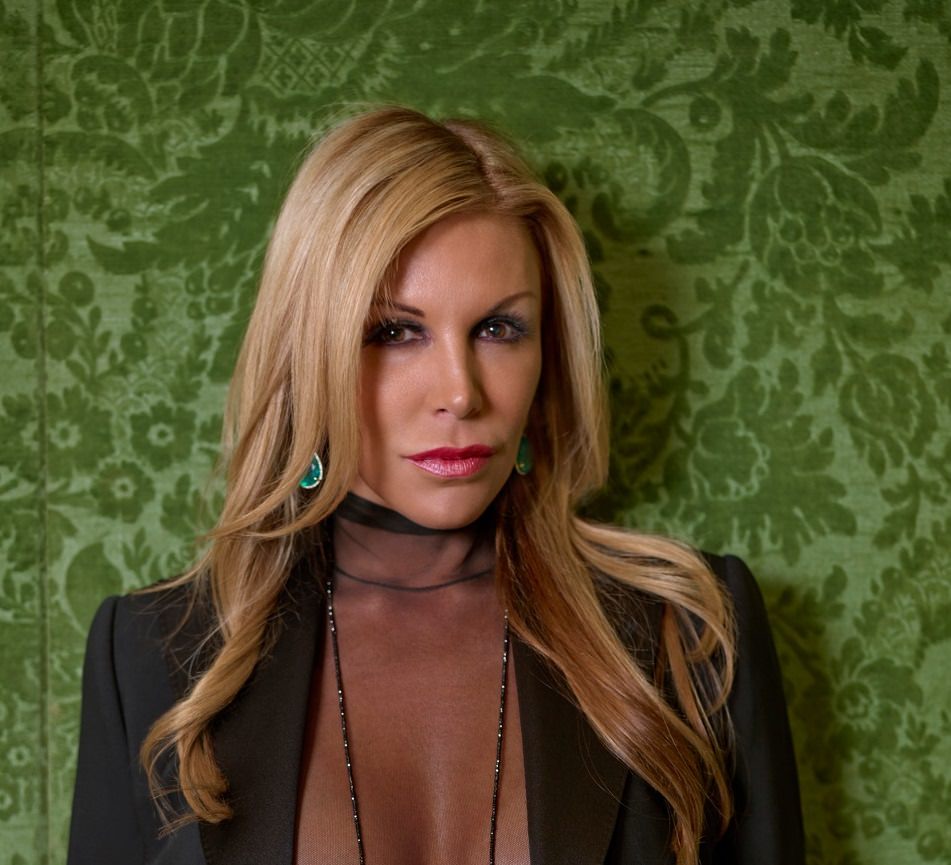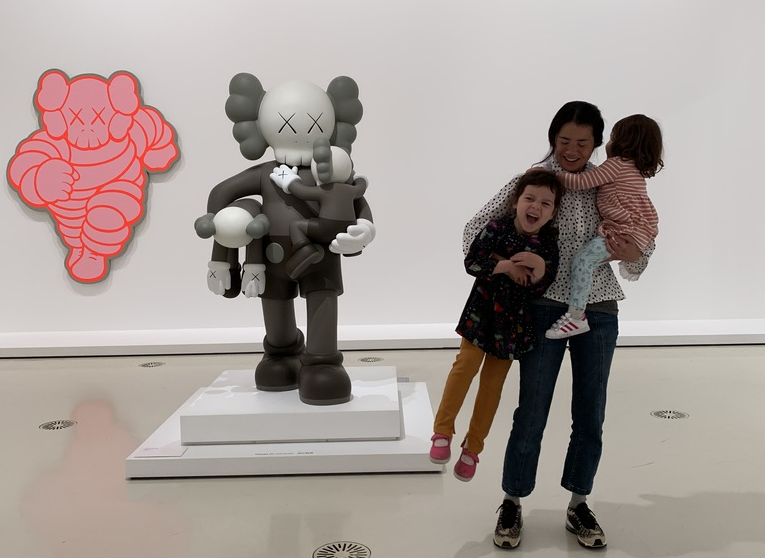The Japanese architect Azusa Murakami and the British artist Alexander Groves formed Studio Swine in 2011 after meeting at the Royal College of Art in London. The collective’s name stands for “Super Wide Interdisciplinary New Explorers,” and it is not limited to just one practice. The couple in work and life recently presented “Wave. Particle. Duplex.” (January 17–February 10, 2019) at A/D/O in Brooklyn. They were the third participant in A/D/O’s Designer in Residence program, which offers designers tools and opportunity to expand the boundaries of their practice. For six months, Brooklyn became Studio Swine’s home, and as they were inspired by their surroundings, it showed in pieces like Dawn Particles and Fog Paintings.
Whitewall caught up with Studio Swine in Brooklyn to learn more about “ephemeral tech,” invisible elements, and why nature always underlies their projects.
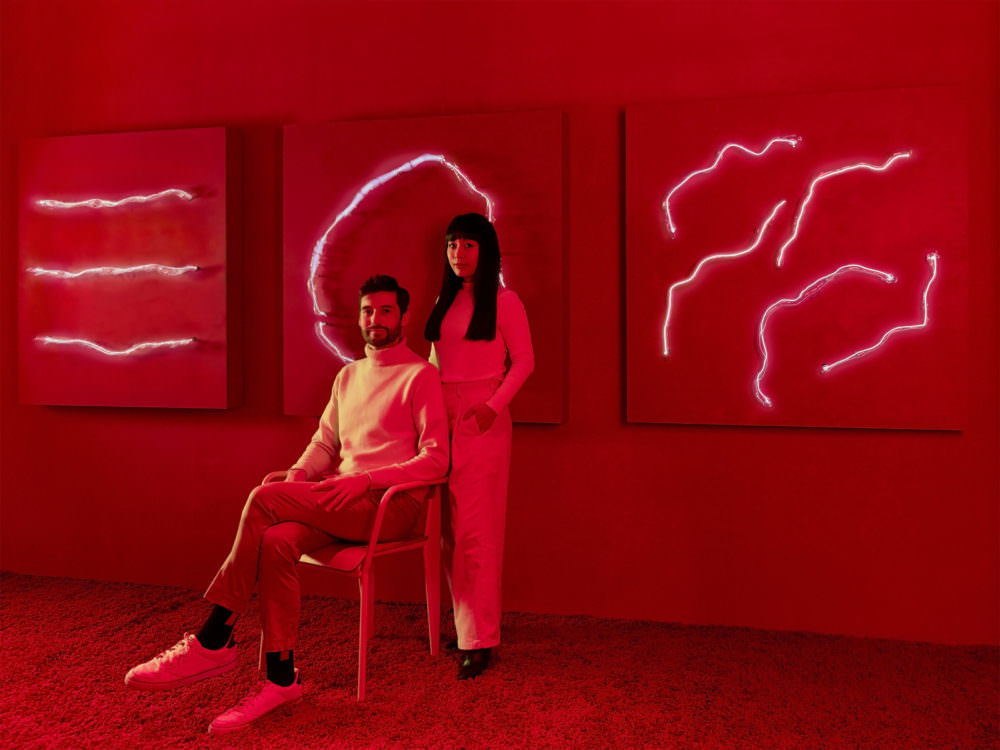
Portrait of Azusa Murakami and Alexander Groves by Daniel Seung Lee, courtesy of A/D/O and Studio Swine.
WHITEWALL: Can you tell us about “Wave. Particle. Duplex.”?
AZUSA MURAKAMI: There are two parts to the exhibition. The first room, with Dawn Particles, is kind of exploring this matter called plasma. Plasma is the fourth state of matter, after solid, liquid, and gas, and it’s the most common kind of matter in the physical universe. The sun is plasma, the lightning is plasma, the northern lights are plasma. It’s all around us, but you can’t see it.
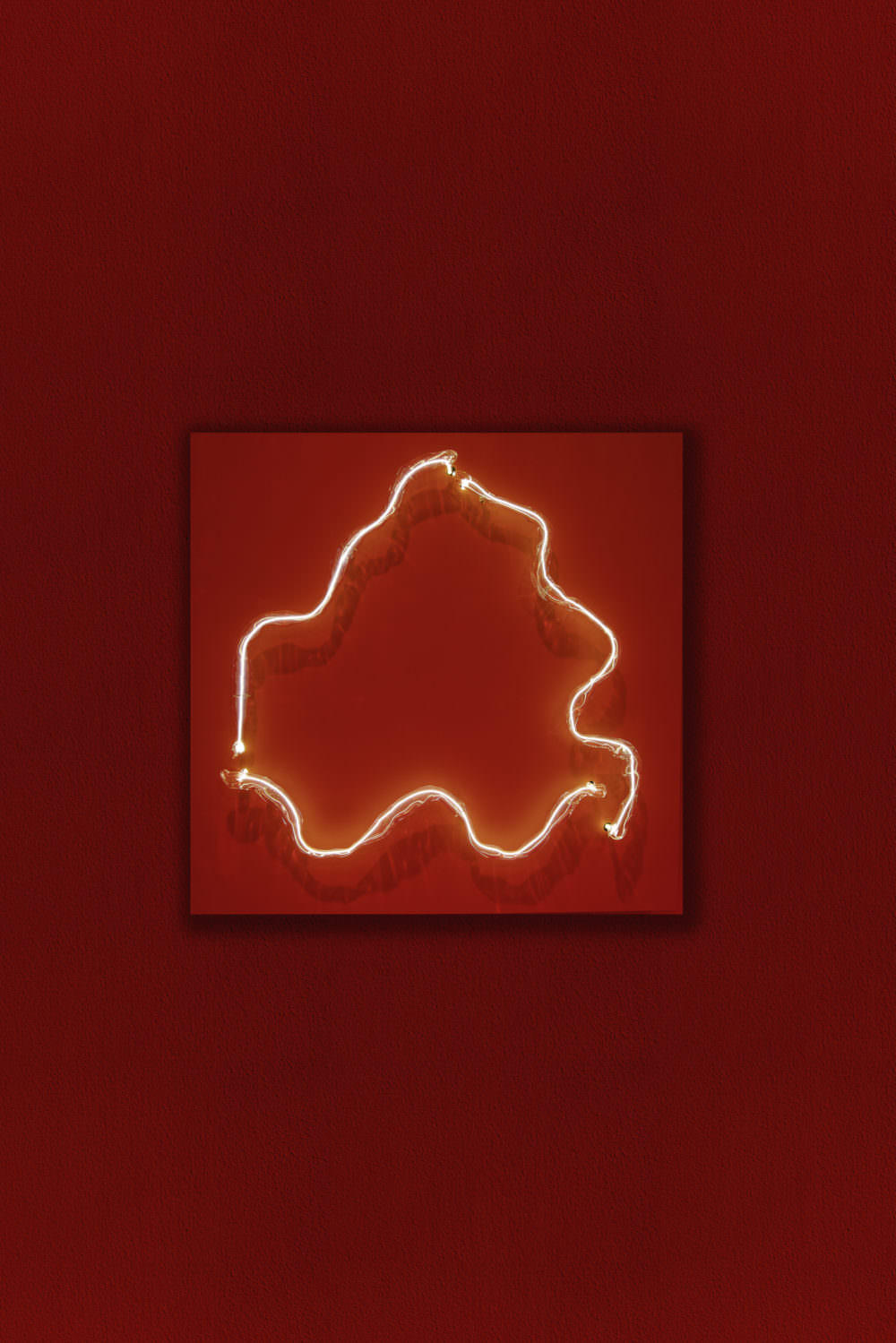
Installation view of “Wave. Particle. Duplex.” at A/D/O, photo by Daniel Seung Lee, courtesy of A/D/O and Studio Swine.
We’ve been working with a gas called krypton and sending electrical charges through the tubes. We’ve programmed them individually so they’re doing their own things. We’ve been experimenting with them for the past six months by varying the diameter of the tubes, changing the voltage that goes through the tubes, and the type of gas that goes in as well.
We like to use technologies, but what we love is material, and a kind of fragile, ephemeral interface with them.
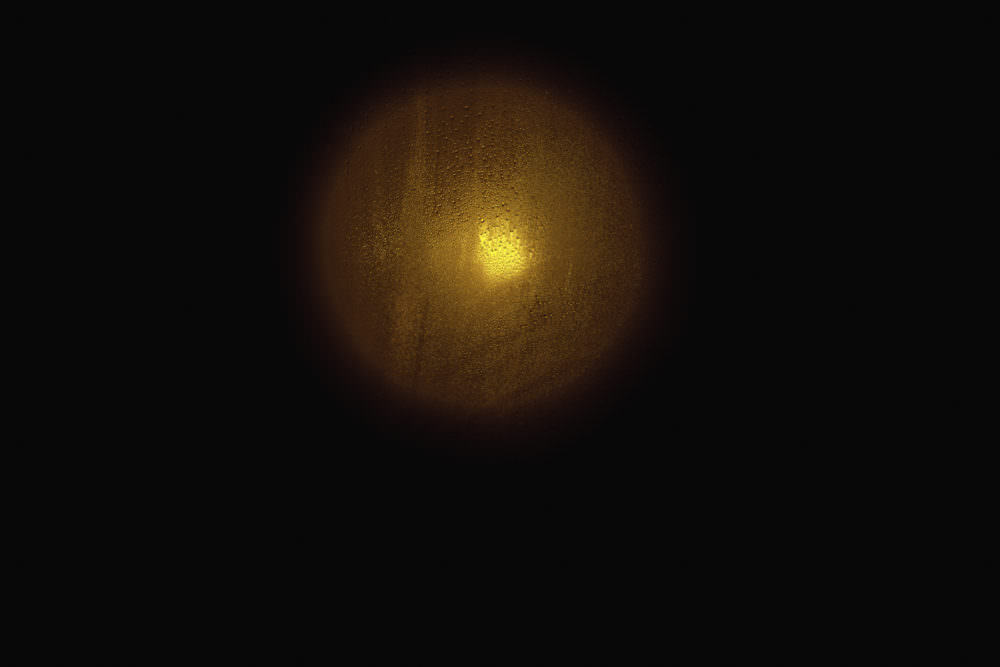
Installation view of “Wave. Particle. Duplex.” at A/D/O, photo by Daniel Seung Lee, courtesy of A/D/O and Studio Swine.
The next room, with Fog Paintings, is kind of created to feel more serene; a “sunset” feeling. These are the two “paintings” that we’ve created—one is inspired by the trajectory of the sun across the sky, and it has a complex mechanism behind that’s kind of navigating this light.
WW: You create immersive installations to tell the story of the energy and the natural elements around you. This was based on New York City and the changing climates. What specifically about New York is this a reflection of?
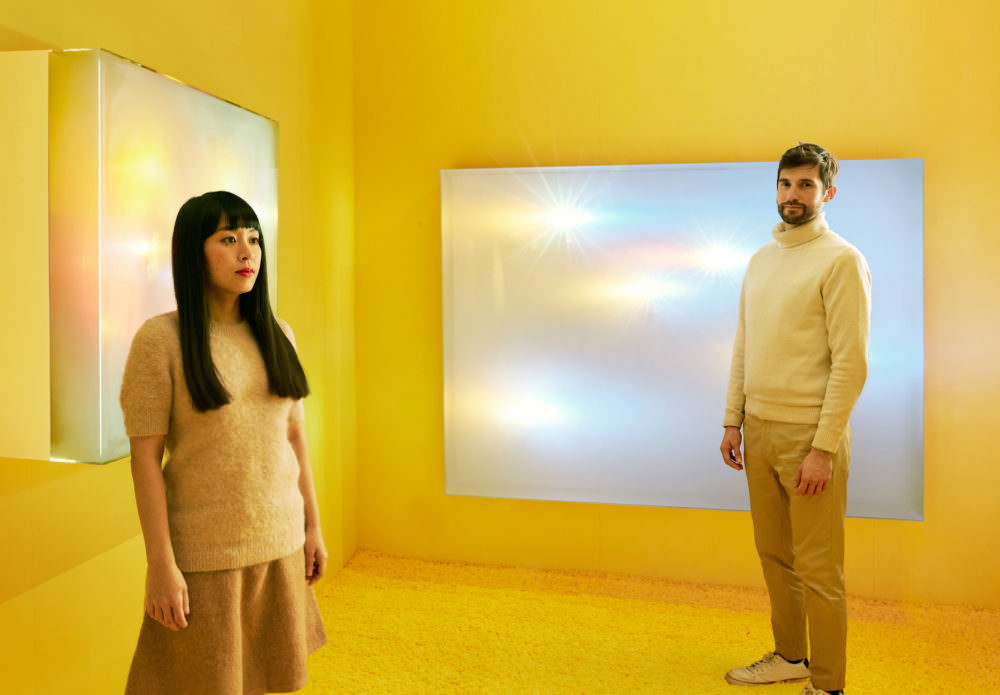
Portrait of Azusa Murakami and Alexander Groves by Daniel Seung Lee, courtesy of A/D/O and Studio Swine.
ALEXANDER GROVES: We really loved walking down to the East River and seeing the constant changing of light on the surface of the water. The New York energy and the kinds of light . . . I think the intensity is something we wanted to bring into this experience. It’s constantly in flux and in motion, and you can hear a kind of high pitch, which is the sound of the glass resonating with the changing currents.
AM: We also love the district steam system and the steam that comes out of the manholes. You’ll see that in the next room, which is all about fog and painting with color. We wanted to make these two contrasting rooms that had a very different feeling. And we wanted to create works to be more about an experience, rather than individual works with each object. This entire installation is an immersive experience in itself.
WW: Where does your creative process start?
AM: For this, we did a lot of walks around New York. We loved being on the waterfront and looking at the amazing quality of light. That was definitely one of the inspirations. We also became very interested in this matter called plasma. Something that we were really interested in was the challenge of taking something that doesn’t have materiality and encapsulating that and giving it a tactility.
We really like using technology, but we see technology as a tool to achieve something that is more primordial. It’s to blur the boundary between the artificial and the natural, and how we coexist in a world where technology and human can be closer.
AG: We’re exploring the plasma and the use of fog and light, so this is more about the light passing through the atmosphere and creating a constantly shifting landscape. It always looks different and the colors are different from what’s reflected there, and there’s a particular kind of density of fog at the time in the chamber.
WW: And you worked with a local artisan for the glass, right?
AM: Yes. We worked with a glass artist at UrbanGlass, who’s based in downtown Brooklyn, to hand-blow these glass pieces next door.
It was really interesting because it’s the first time we’ve worked with glass and plasma. There were a lot of things we didn’t know, and there was definitely a lot of trial and error with seeing how the gas behaves in certain diameters. We had to adjust the aesthetic of the piece according to how the gas behaves, so there was constant dialogue between them and us and what we want to achieve.
AG: There were so many accidents that happen on the way that you can kind of achieve. It’s like scientific discoveries. You have a certain intention but then have to have flexibility to be open to what the material wants to be or do.
WW: It’s a different type of art entirely when it can change based on its environment. Would you consider this an evolving piece of art?
AG: Yes. And that’s what’s really exciting because it’s about how the atmosphere creates different phenomena every day. The sun rises in a very regular way, but day to day, there’s such huge variety in the complexity of the cycles and the atmosphere. We love building that element into the work where it has a life of its own and an unpredictability. We call it “ephemeral tech.” The interfaces are in flux and it’s ephemeral and fragile. We really like that.
AM: This is more like a study, thinking about giving light volume and mass. And it’s a single white light passing through a dichroic cube, splitting the white light into different color hues. It’s slowly rotating and dimming in and out, casting these constantly changing colored shadows. So it’s never the same.
WW: Using technology to bring us closer to the natural world has been a theme in your work. Was there a moment early on in your career where this caught your attention?
AG: We were always drawn to our relationship with nature because we see, of all the issues that face our times, the most pressing and the most urgent is our relationship toward nature and how the challenge we face as a civilization is climate change. It’s the biggest challenge in the history of humanity. No matter what else is going on, we always see that as a massive destruction, and the biggest issue of our time as a species. All of our work, in a way, is about that.
It’s also a primordial drive for art. The very first cave drawings were of animals. It’s something that sets our species apart—like a sense of self- awareness, of representing the natural world, representing the kind of cycles on which our existence depends. Even pre-language, our species would have understood that we need the sun to come up each day to get our energy. Then you see ancient civilizations—the Mayans, the Egyptians—building these structures that were all about the solstice. There’s mythology about how the sun crosses the sky through chariots … This is no different from that. It’s that same primal drive.




